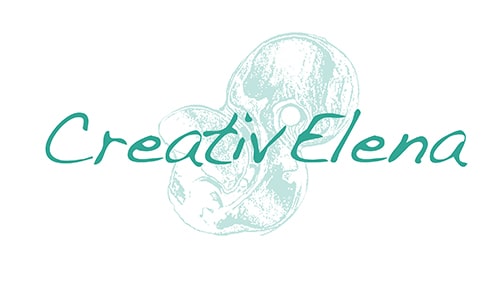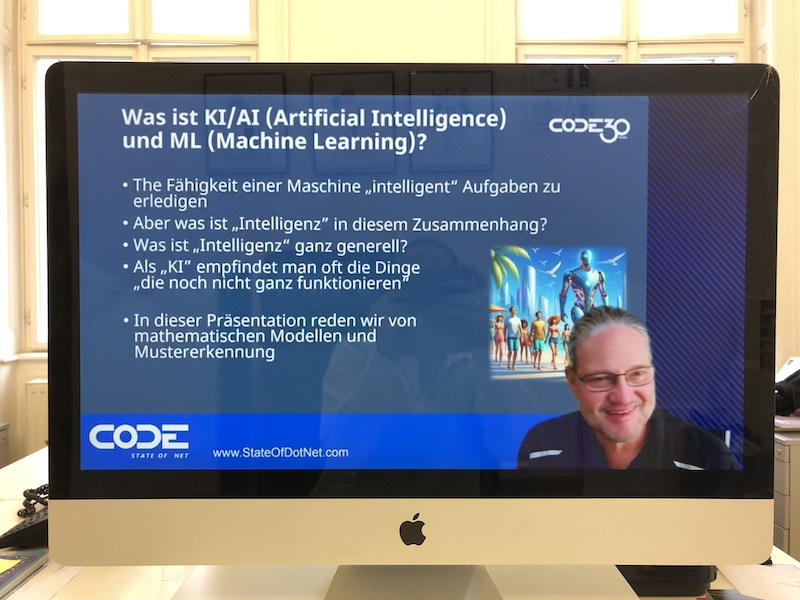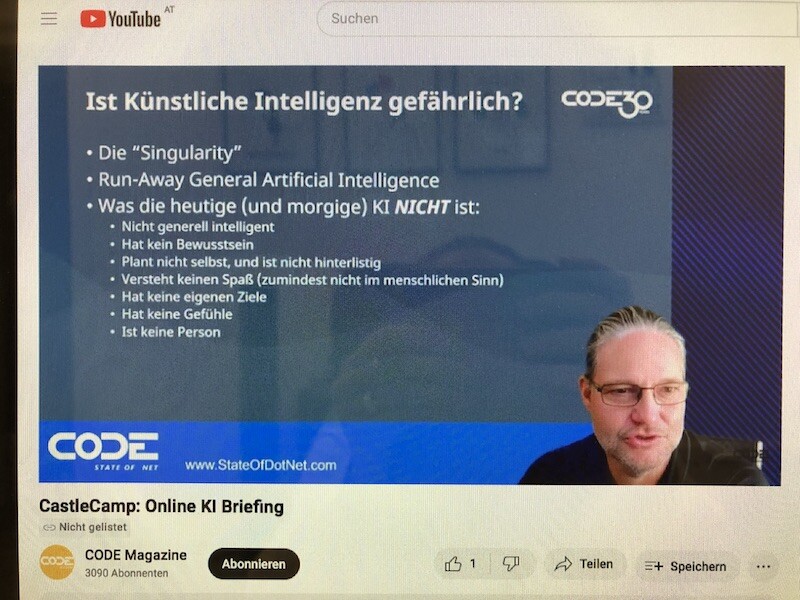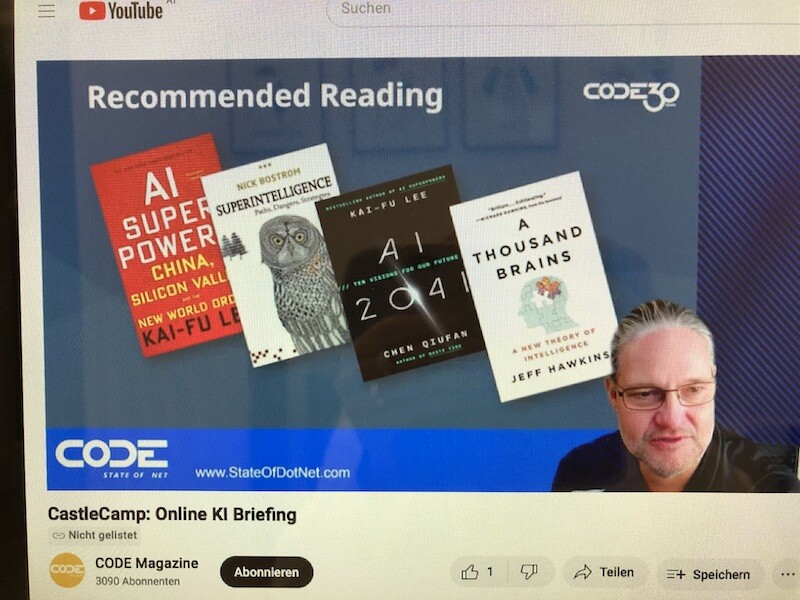The dawn of AI, or artificial intelligence. Some say it’s coming, some say it’s already here. Some even think it has already arrived long ago, infiltrating all areas of our (virtual) working and everyday lives.
Like many other people, I was pretty caught up in all the new terminology: LLMs, ChatGPT, Open AI and much more. What does it all mean, and more importantly, what benefits does AI bring to us in the creative networking society?
The answer is simply: a lot. At least according to Markus Egger, an expert in artificial intelligence from CODE / EPS. Markus impressed us at last year’s #cczk23 CastleCamp Kaprun tech conference with his knowledge on artificial intelligence; he recently organised a virtual follow-up of his talk (read more about Markus Egger and his impressive AI references here).
So what exactly is artificial intelligence? Since when has it been around? And what’s yet to come?
According to Markus Egger, founder and Chief Software Architect at CODE, artificial intelligence (AI) has been around for about 70 years. These include AI technologies for price trends, stock markets, translating text or spoken word, visual and audio recognition software (how many people are on a certain ski slope at any one time?), facial recognition and much more. All these AI applications are “a problem that has been technically solved for years; now we need to discuss the moral and legal aspects”, says Markus. Today’s AI, he continues, is a remarkably well-functioning, supportive AI that is able to make very accurate predictions.
What is yet to come is so-called autonomous AI. This is a form of artificial intelligence that can actively decide how, for example, an operation on a cancer patient should be carried out. At the moment, this is not (yet) the case.
AI is basically about learning.
The difference to the past, according to Markus, is that a programmer no longer tells a computer: Do this, do that. The instruction now is: “Recognise patterns in the data. Make predictions based on these patterns. Answer questions like: How many guests will I have as a travel region in the future? How expensive should my hotel room be? As an AI, learning (faster, better) from patterns in mega data means being able to speak like a human,” says Markus.
We are talking about enormous amounts of data, millions of data records that AI needs for its predictions. Artificial intelligence can use all these data sets to calculate extremely accurate price predictions, for example – much better and faster than a human ever could.
What we don’t have yet is a form of “general artificial intelligence” that thinks, feels and acts like a human being. This form of development will take some time because:
“AI may be extremely intelligent in certain areas. But generally intelligent, like a human being, no, it is not. Not yet …”
One thing is certain: artificial intelligence is already having a huge impact on society. Think industrial revolution, but even more dramatic (and faster)! According to Markus, it is important to remember that AI is also creating all kinds of jobs – new jobs that didn’t even exist before.
“Using AI to determine what should happen is much easier than building a robot to execute the task. People and machines will continue to work together well into the foreseeable future.”
What does it take to stay afloat in the vast pool of AI?
Unsurprisingly, the answer is: data, data, and more data! Huge amounts of (cloud) data have been training artificial intelligence technologies for years: Europe, according to Markus, is clearly lagging behind other regions of the world.
Another criterion is the availability of computing power. Microsoft, Amazon, Google Clouds and many other providers have now set up gigantic server farms that combine hundreds of thousands of servers. Their billion-euro financing is often associated with high risk (1:10), and the associated working environment, according to Markus Egger, is “not so prevalent in Europe”.
Let’s talk ChatGPT. Please.
The current generation of AI is impressive. Until a few months ago (!) it was still science fiction. And ChatGPT is actually just a demonstration of AI technology from the non-profit company Open AI Services in San Francisco. It is based on Microsoft infrastructure. Every application in the world will be determined by artificial intelligence in the future, Markus predicts with conviction.
In November 2022, he tells us, something amazing happened: ChatGPT (“Generative Pre-Trained Transformer”), a generally available AI technology, achieved over five million (!) users in the first five days. As a result, Microsoft began to change its entire business model in January 2023 as to “every product group within Microsoft must integrate AI”. Otherwise it will be discontinued.
Microsoft is currently adopting this approach under the name “Microsoft Copilot”. This copilot is being integrated everywhere to support users, for example in the new versions of MS Office. The aim? To dramatically improve productivity. Any application that does not have a Copilot function is outdated and needs to be replaced. As the market leader, “Microsoft has to get it right, otherwise they will automatically be left behind,” says Markus.
Microsoft, he continues, has a data centre in Dublin that is a mile long and half a mile wide. In other words, a gigantic space home to hundreds of thousands of servers. Microsoft is currently building 150 new such data centres, specifically for artificial intelligence and to make the corresponding Copilot functionalities available. Amazon is also involved: a global mega-race has broken out for AI and its seemingly fantastic technologies.
LLMs, anyone?
LLMs (Large Language Models) and GPTs (Generative Pre-Trained Transformers) are nothing more and nothing less than statistical calculation programmes. Their ability consists of being able to specify the next, statistically logical word based on a sentence – at lightning speed, of course. “Imagine a text calculator at a very, very high level. So that the written and spoken words and sentences are similar to what humans would say”, Markus Egger explains in his presentation.
He emphasises that it is very important to understand that artificial intelligence is not about truth, nor about being scientific. If ChatGPT provides a factually correct answer to the question, Who won the Hahnenkamm race in 1987?, then this is more of a coincidence. This is because ChatGPT calculates the answer on the basis of all the text available on the Internet; if the answer is correct, it is more likely to be a coincidence. This form of AI technology, Markus explains, must be integrated in other scenarios so that correct answers can be expected – currently still a job for (human) programmers.
The real purpose (of ChatGPT & Co.) is to speak like a human being. In any language in the world.
ChatGPT is a collection of many different AI models. GPT 3.5 is currently the most widely used version. GPT 4, the next version, is far more intelligent than expected and the results are absolutely astounding. Even Markus is briefly awestruck: “How can a statistical text calculator think so well? That’s really, really exciting. Abstract thinking using AI technologies has become possible.”
Follow-up: Let’s hit the KI jungle.
We answer a question from the audience: Can I myself start training a computer language model?
Markus explains that “training” language models takes many months and is very expensive. It is better to use pre-trained models and “ground” them in your own reality. This also requires time and programming expertise, but has become much, much easier thanks to the applications of AI technologies. Databases can be created in one language and translated into any language in the world thanks to artificial intelligence. The topic of multilingualism is incredibly fascinating! As a multilingual person myself, I can only watch, learn and soak up all there is to it.
You are welcome to watch the AI briefing by Markus Egger summarised in my article as a recorded video stream via this link. In the presentation, he goes into even more detail about the absolutely amazing capabilities of all forms of AI.
Now on to you: How and where do you already use AI-supported technologies? What has it improved and / or made easier for you? And where are we headed, in your opinion?




